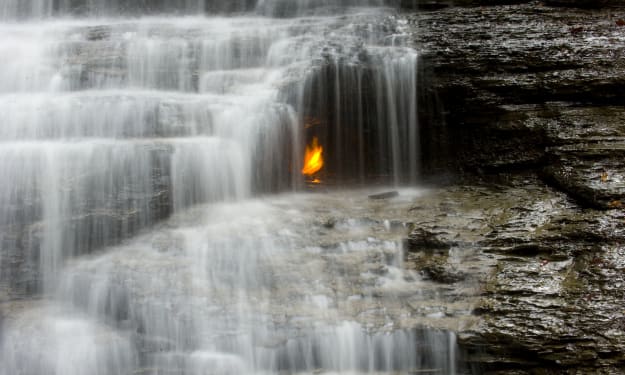
Introduction
Oxygen, the elixir of life, is essential for the existence of nearly all living organisms on Earth. Our planet's oxygen-rich atmosphere is a testament to the remarkable processes that continuously produce this life-sustaining gas. In this comprehensive exploration, we delve into the multifaceted mechanisms behind Earth's oxygen production, unraveling the interconnected web of life that generates and maintains this vital resource.
Photosynthesis: Nature's Oxygen Factory
At the heart of Earth's oxygen production lies the miraculous process of photosynthesis. Plants, algae, and certain bacteria harness sunlight, water, and carbon dioxide to produce energy, releasing oxygen as a byproduct. Terrestrial plants and phytoplankton in the oceans perform this transformative feat, collectively contributing a significant portion of the oxygen that fills our atmosphere.
Phytoplankton: Guardians of the Oceanic Oxygen
Although often overlooked, the microscopic phytoplankton inhabiting Earth's oceans play a colossal role in oxygen production. These tiny photosynthetic organisms, comprising various species of algae and cyanobacteria, contribute approximately 50% of the oxygen released into the atmosphere, surpassing the contributions of terrestrial plants.
Rainforests and Terrestrial Oxygen Reservoirs
Earth's lush rainforests, often dubbed the "lungs of the planet," harbor a vast array of plant species that continually absorb carbon dioxide and release oxygen through photosynthesis. While rainforests cover only a small percentage of the Earth's surface, their unparalleled biodiversity and dense vegetation make them crucial contributors to the planet's oxygen supply.
The Oceanic Balance: Oxygen Exchange and Phytoplankton Health
The health of marine ecosystems, particularly the well-being of phytoplankton, significantly influences global oxygen production. Climate change, ocean warming, and pollution pose threats to these vital organisms, impacting their productivity and potentially disrupting the delicate balance of oxygen production in the world's oceans.
Human Impact and Oxygen Imbalance
Human activities, including deforestation, industrialization, and the burning of fossil fuels, have led to concerns about the imbalance between oxygen production and consumption. While Earth's oxygen levels remain relatively stable due to the vast reserves stored in the atmosphere, the impact of ongoing environmental changes on future oxygen production warrants attention and conservation efforts.
Oxygen Cycles: Earth's Regulatory Mechanisms
Beyond photosynthesis, Earth's oxygen supply is intricately linked to various natural cycles. The carbon cycle, for instance, influences oxygen levels as it regulates the exchange of carbon dioxide and oxygen between the atmosphere, plants, oceans, and soil. Understanding these interconnected cycles is crucial in comprehending the intricate dynamics of oxygen production and consumption.
Ancient Oxygenation: Earth's Evolutionary History
The presence of oxygen in Earth's atmosphere wasn't always abundant. Early in its history, our planet lacked significant oxygen levels, with the gas accumulating gradually over millions of years due to the emergence of photosynthetic organisms. The Great Oxidation Event around 2.4 billion years ago marked a crucial milestone, paving the way for the rise of oxygen-dependent life forms.
Oxygen and Evolution: Shaping Life's Diversity
The availability of oxygen has profoundly influenced the evolution and diversification of life on Earth. The rise of oxygen facilitated the emergence of complex multicellular organisms, allowing for the development of more efficient metabolic processes and enabling the evolution of diverse ecosystems.
Human Impact on Oxygen Dynamics
Anthropogenic activities have not only altered Earth's climate but also affected oxygen dynamics. Deforestation, industrial emissions, and the burning of fossil fuels contribute to increased carbon dioxide levels, potentially impacting the balance of oxygen production and leading to localized oxygen depletion in some regions.
Balancing Oxygen Supply and Demand
Despite concerns about human-induced changes, Earth's oxygen supply remains resilient. The sheer magnitude of oxygen production by plants and phytoplankton continues to outpace human impact. However, understanding the delicate equilibrium between oxygen supply and demand is crucial for maintaining the planet's health and preserving this vital resource.
Future Perspectives and Conservation Efforts
In an era of environmental challenges, conservation efforts are paramount. Protecting forests, promoting reforestation, supporting marine conservation, and mitigating climate change are critical steps in safeguarding the mechanisms that sustain Earth's oxygen production. Global initiatives that emphasize sustainability and ecosystem preservation play a pivotal role in ensuring a breathable future for all life forms.
Conclusion: Sustaining Nature's Gift
Earth's oxygen production is intricately woven into the fabric of life, sustaining ecosystems, supporting biodiversity, and providing the vital gas that enables respiration for countless organisms. Recognizing the profound interconnectedness of all life forms, preserving biodiversity, mitigating climate change, and conserving natural habitats become imperative in ensuring the continuous gift of oxygen for generations to come.
In the symphony of Earth's biosphere, the production of oxygen stands as a harmonious melody, orchestrated by the collaborative efforts of diverse life forms. As stewards of our planet, it is our responsibility to protect, cherish, and nurture this invaluable resource, ensuring a breathable and thriving world for present and future generations.
About the Creator
Siva N
Whenever I write a story, I will bite these things
1.Research Prowess
2.Scientific Acumen
3.Storytelling Mastery
4.Attention to Detail
5.Inquisitive Mindset
6.Adaptability and Creativity
7.Structure and Clarity
8.Empathy and Engagement






Comments
There are no comments for this story
Be the first to respond and start the conversation.